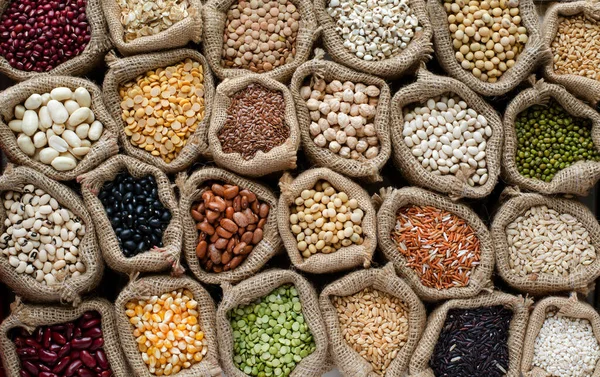Are you looking for pest and disease free growing media for your strong and healthy seedlings? In this blog post, we will discuss 8 best components of crops growing media.
Whether you are in seed propagation business or a farmer raising nursery crops such as vegetables, fruits, ornamentals, trees or other specialty plants, use quality growing media is time and cost saving as well as profitable for you.
What is growing media?
Growing of healthy seedlings is crucial for the success of any crop. The right growing media can provide the necessary nutrients, moisture, and drainage to promote healthy seedling growth.
Growing medium is also referred to as “substrate” or “potting soil”. It is any material, other than soil on the spot, in which plant seedlings, cuttings or tubers etc. are raised. The purpose, benefits or functions of a growing media is to;
- Hold water needed by the young crops,
- Store and Supply nutrients for the young seedlings.
- Provide space for gaseous exchange for the plant root system
- Act as an anchorage or support for plant roots
Factors to consider while selecting the best growing media
How do you choose the best substrate given the above functions? To choose the best good quality growing media consider the following characteristics and factors.
When choosing a growing media for seedlings, it’s important to consider factors such as pH level, moisture retention, and drainage. It’s also important to consider the specific needs of your crop, as different crops may have different requirements. It’s a good idea to experiment with different growing media to see which one works best for your particular crop and growing conditions. Additionally, for healthy seedlings, it’s crucial to keep a close eye on the seedlings, checking for signs of disease or pests and providing proper fertilization and irrigation.
A summary of factors are presented in the table below.
| Physical characteristics | Chemical Characteristics |
|---|---|
| Bulk Density Moisture retention Drainage Air-Filled Porosity Media Stability | Cation Exchange Capacity (CEC) Media pH Electrical conductivity (EC) Carbon-to-Nitrogen Ratio |
Which is the best growing media component to use in Kenya?
There are two major types of growing media organic or inorganic. Organic components include, but are not limited to: peat moss, bark, coconut coir, rice hulls, wood fiber, etc. Inorganic components include, but are not limited to: perlite, pumice, vermiculite, sand, hydrogel, etc. In this post we will give you a list of the locally available and commercial growing media available in Kenya.
Soil
Soil is the most common and cheapest growing media for your seedlings. It provides a natural environment for seedlings to grow and offers a good balance of moisture and drainage. However, it’s important to use a high-quality soil that is free from pathogens and has the right pH level for your crop.
To ensure this, we recommend that you conduct soil testing and do a soil treatment process before use. Soil analysis will give you its acidity, nutrient composition and if it’s contamination profile if there are any pathogens, spills or pests contamination. Soil treatment involves a remediation process for its decontamination. There are 4 common methods of soil treatment or correction you can consider.
- Biological treatment/bioremediation uses bacteria to break down substances in the soil
- Chemical oxidation converts contaminated soils into non-hazardous soils
- Soil stabilization involves the addition of immobilizing agents to reduce a contaminants’ leachability
- Physical methods, like soil washing, use water to separate or remove contaminants
Peat moss
Peat moss is an organic growing media that is lightweight and easy to handle. It is a natural product that’s formed as layers of moss grow over one another. It provides good moisture retention and drainage, making it an ideal growing media for seedlings. Peat moss is also pH-neutral, which is ideal for a wide range of crops.
Vermiculite:
Vermiculite is a mineral that is derived from mica. It is lightweight and provides good moisture retention and drainage, making it an ideal growing media for seedlings. Vermiculite also has a high cation exchange capacity, which helps to retain essential plant nutrients.
Rockwool:

Rockwool is a growing media made from melted rocks, such as basalt or limestone. It provides good drainage and aeration, and can retain large amounts of water. Rockwool is also pH-neutral and can be sterilized for use in seedling production, making it a popular choice among commercial growers.
Perlite:
Perlite is a volcanic rock that is processed to create small, lightweight pellets. It provides good drainage and aeration, making it an ideal growing media for seedlings. Perlite also helps to retain moisture, which is crucial for seedling growth.
Coir:
Coir is a natural growing media made from coconut husk. It is a sustainable alternative to peat moss and provides similar benefits, such as good moisture retention and drainage. Coir is also pH-neutral and has a high cation exchange capacity, making it a great option for seedling growth.
Compost:
Compost is a great growing media for seedlings as it is rich in nutrients and beneficial microorganisms. It provides good moisture retention and drainage and can help to improve soil structure. Compost can be made from a variety of organic materials and can be used as a standalone growing media or mixed with other media.
Grow bags:
Grow bags are made of a porous fabric that allows for air and water to circulate. They are lightweight, reusable and can be filled with a variety of growing media such as soil, compost or coco peat. They are ideal for small scale growing and can be easily transported.
Conclusion
In conclusion, choosing the right growing media for seedlings is crucial for the success of any crop. Different growing media, such as soil, peat moss, vermiculite, perlite, coir, compost, Rockwool and grow bags, can provide the necessary nutrients, moisture, and drainage to promote healthy seedling growth.
It’s important to consider the specific needs of your crop and experiment with different growing media to see which one works best for your particular crop and growing conditions. By providing the proper growing conditions, seedlings will have the best chance of developing into strong, healthy plants that can produce a bountiful harvest.




This is some rich insight. Thank you